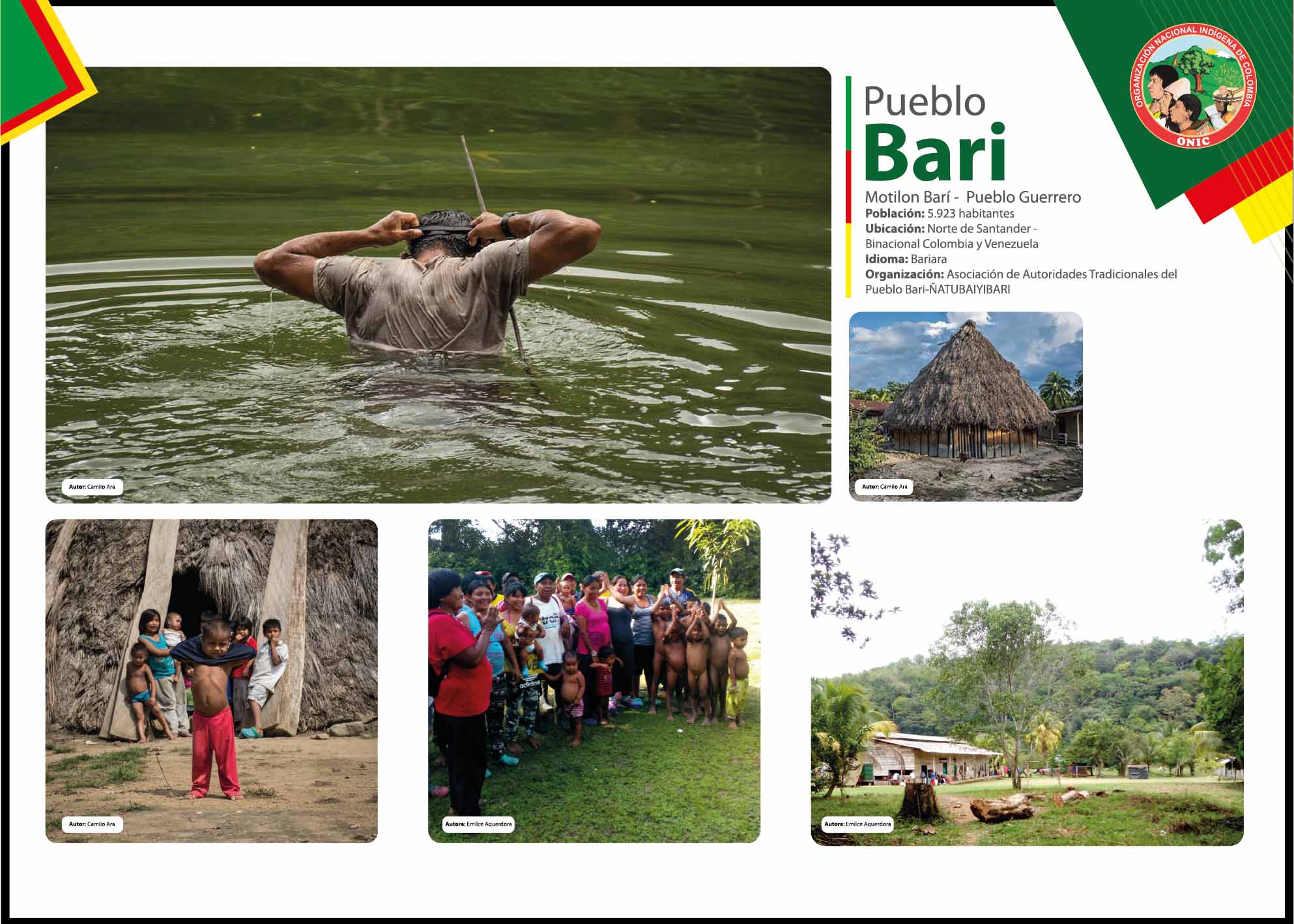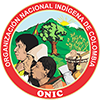Barí
OTHER NAMES:
Motilone barí, motilón, Barís, barira, dobocubi, cunausaya
GEOGRAPHICAL LOCATION :
They live on the border with Venezuela in the serranía de los motilones, (range of mountain of the Motilones), department of Norte de Santander; the Bari are located on the pit of the Catatumbo River, a forested region - humid tropical - composed of lowlands that descend from the Santurbán knot, in the eastern mountain range. The different water currents, which run in a south - north direction and that cross the department of Norte de Santander, converge in the macro region of Lake Maracaibo.
The main geographical accident that shelters the Barí is the serranía de los motilones, between the Cerro de Mina (south) (the mina Hill), the sources of the Catatumbo River and the Sierra del Perijá (north) (Perijá Hill), under the jurisdiction of the municipalities of El Carmen, Convention and theorem. It is a region with an average temperature of 24 ° C and rainfall levels estimated at 2,500 mm, where winters occur in the months of April - May and October - November, and summers in the months of December, January and February .
POPULATION :
This indigenous people has a population of 5,923 people, of whom 4,897 are in the municipal headwaters. The municipalities with the highest concentration of this publication are Cúcuta and Tibú
LANGUAGE :
This language is called BARÍ ARA; God Sabaseba, was the one who organized the world and their lives and the most feared of the spirits is Dabiddu, owner of the night, spirit that causes evil and who, with his fatality brings disease and death to Barí. The language Bari Ara, designates rivers words that mean living beings because they move. For these reasons there is a huge pain in the Bari People, because on the occasion of oil exploitation they are hurting us and the spirit feels it.
CULTURE AND HISTORY :
From pre-Hispanic times the area was characterized by permanent intercultural contact between the groups of the surrounding regions. By the time of the conquest, they occupied an extensive territory from the Venezuelan Andes to the Serranía del Perijá. The group maintained its resistance to “pacification” for almost five centuries by developing adaptation mechanisms, such as its pattern of multiple residence that allowed the relative isolation of populations. However, the Capuchin missions managed to establish themselves in their territory since early times, allowing contact with the majority society.
From the first decade of the twentieth century, concessions were made for oil farms in the Barí territory, encouraging the opening of roads and the massive colonization of the region; before which, the reaction of the natives was violent, causing the beginning of a long war process against the oil companies that would last until the sixties. Missionary action intensified in the area and continues to the present, developing a policy of "integration and development" of the Barí and Yuko communities.
CULTURE:
They believe in a supreme being, they invoke it in diseases, when they go fishing, hunting and harvesting. But this religion has no constituted "authorities" that can transmit since they deform from generation to generation. The supreme being or "Saymaydódjira" is the God from the beginning before the existence of the motilón and therefore the Creator. When it is considered that a child has already acquired the necessary skills to survive autonomously, then the father gathers a few close relatives in an isolated place, and there in that meeting they confer the adult status to the boy by delivering the guayuco
ECONOMY:
They practice logging and burning horticulture, fishing and hunting. Its traditional cultivation is sweet cassava, although other species such as bananas, corn, cane and cocoa have been adopted. It is common to raise pigs and poultry for sale in the market. They complement these activities with the day laborer. Some groups interleave commercial and traditional subsistence practices.
HOUSING :
Its traditional residence pattern is characterized by the possession of three huts arranged cyclically, periodically inhabited by each local group. The bohío or communal house -rectangular or oval- is the center of the Barí culture and activity, surrounded by a main and secondary conuco.
Currently, there is a tendency - driven by missionaries - towards the adoption of a fixed pattern of residence through the construction of hamlets, partly as a defense strategy for the territory they own. However, seasonal huts are still maintained in some places, despite the introduction of livestock and cash crops. Two of its main settlements are called Hitayosara and Ikiakarora.
SOCIOPOLITIC ORGANIZATION :
Socially organized in local communities whose kinship relations are defined according to the group of residence. These communities are divided into consanguineous brothers and political brothers. The minimum unit of work is the “home” consisting of a group of “brothers” men and their related wives. Its political system is egalitarian and is based on the recognition of various roles transferred from generation to generation.
Sources:
Arango y Sánchez. Los pueblos indígenas de Colombia 1997.
Dane: Censo1993-Proyección 2001-.
Jaramillo Gómez, Orlando. “Los Bari“, en: Geografía Humana de Colombia, Nordeste Indígena, Tomo II, Instituto Colombiano de Cultura Hispánica, Santa Fe de Bogotá,1993.
Fundación Hemera - Etnias de Colombia
Los Pueblos Indígenas de Colombia en el umbral del Nuevo milenio – DNP – Departamento Nacional de Planeación
Recuperado en: TodaColombiaPuebloBarí
-Ministeriodel Interior. República de Colombia - Caracterización Pueblo Motilón Barí
-Ministerio de Cultura. República de Colombia - 200 años CULTURA ES INDEPENDENCIA - Bari, hijos de sabaceba y gente de los ojos limpios
-Página web. ASOCBARÍ. Pueblo Indígena Barí. Axbibumbi Shidemánumay Aibaynobi Yaphidódari.




